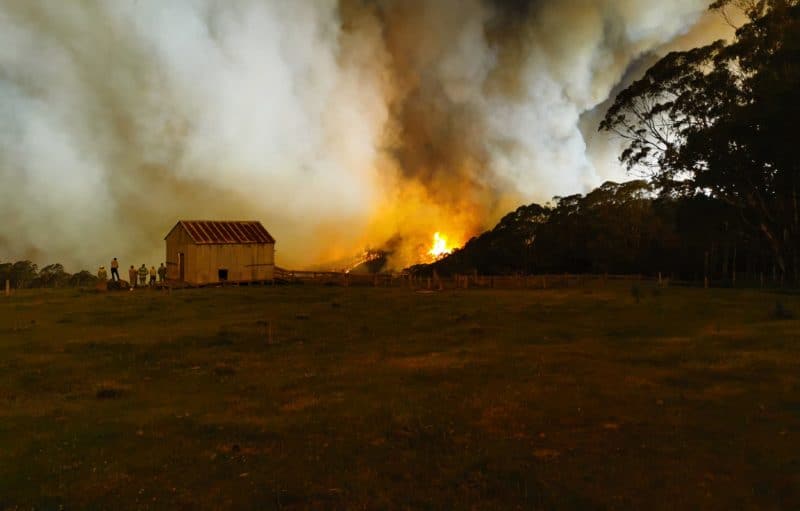Fire is one of the most challenging land management issues in Victoria.
The dilemma seems impossible: the fuel that feeds deadly bushfires is also the living foundation of our natural world.
Current fire management isn’t working. We’re burning native bush too often, harming wildlife while failing to adequately protect communities. Climate change is making everything worse.
People often think we must choose between human safety and protecting nature. We don’t.
There’s a better way. We can keep people safe AND protect our natural heritage – if we’re smart about it.
Fire in the past
For thousands of years, our native plants and animals evolved with fire as part of their world. Most plants can survive occasional fires. Some actually need fire to thrive.
But frequent fire kills them.
First Nations people were fire experts. They burned strategically – different areas, different times, different purposes. They used fire to grow food plants and attract animals for hunting.
Today, some communities still use these traditional fire techniques. But experts are still debating how much burning is right, and where to do it.
The key lesson: Fire can help or harm nature, depending on how often and where it happens.
Fire management today
The Department of Energy, Environment and Climate Action (DEECA) works to prevent and control bushfires.
Victoria’s Forests Act from 1958 says DEECA must do this job in state forests, national parks, and other protected public lands.
Managing fire in our native bushland is getting harder because of several problems:
- Climate change is making fire weather happen more often and be more dangerous.
- Introduced species cause many problems. Deer multiply quickly when they eat the fresh green plants that grow after fires. Weeds like cape broom also grow better after fires.
- Pressure on land managers to reduce fire damage means they do much more fuel reduction burning (controlled burning to remove material that could fuel future fires) than ever before.
Fire and our web of life
Fire management is hard work, and keeping people safe will always come first. But we need to be honest about how well fuel-reduction burns actually work.
Most of Victoria is covered by buildings, roads, and other human-made things. These are often surrounded by grasslands or bushland. We need to figure out the best combination of approaches to achieve two main goals: keeping people safe and protecting nature.
Studies by fire experts show that fuel-reduction burning has limits on the worst weather days. When fire danger is at its highest, controlled burns work best near towns and houses. They don’t work as well in areas far from buildings.
There are many important ways to keep people safer without harming habitats and wildlife:
- Better firefighting aircraft – having more planes and helicopters ready to attack fires quickly
- More watching for arsonists – keeping a closer eye on people who deliberately start fires
- Stricter building rules – not allowing new houses to be built in high-risk fire areas
- Financial help – like interest-free loans for people to build approved fire shelters at home
- Mandatory evacuation – forcing people to leave dangerous areas unless they have an approved fire shelter
- Local power stations – so faulty power lines don’t cause fires
- Better community education – teaching people how to stay safe
*Aerial preparedness is expensive, but compared to the cost of damage from a severe fire, it’s a good investment. Victoria is already good at this, but there’s room for improvement
What is a tolerable fire interval?
Fire scientists have figured out the ‘tolerable fire intervals’ for most of Victoria’s natural areas.
The ‘minimum tolerable fire interval’ is how long a habitat needs between fires to stay healthy. For example, how many years it takes for plants to grow back and become old enough to produce seeds.
The ‘maximum tolerable fire interval’ is how many years can pass before a forest gets too old and starts to die or decay. The forest needs to be ‘refreshed’ by fire before this happens.
This system is still debated. It’s only based on how some plants respond to fire, and doesn’t consider the impacts on animals and birds. However, most experts think the best approach is to have different aged areas across the landscape – all between the minimum and maximum fire intervals for each habitat type.
Every year, DEECA must report on how its controlled burning program affects nature. Recent reports show DEECA has failed to meet its goal of protecting biodiversity.
About half of Victoria’s native bushland has been burned too frequently – it’s below the minimum tolerable fire interval. Much of this over-burned area is still being subjected to management burns.
The key problem: We’re burning native bush too often, which is harming the plants and animals that live there.
Presentation from Dr Philip Zylstra, Adjunct Associate Professor, Curtin University
Zylstra’s research has focused on efforts to build a basis for fire management that has sound scientific foundations and applications. We hope his modelling and analyses of climate-vegetation-fire feedbacks provides guidance in our new climatic reality.
